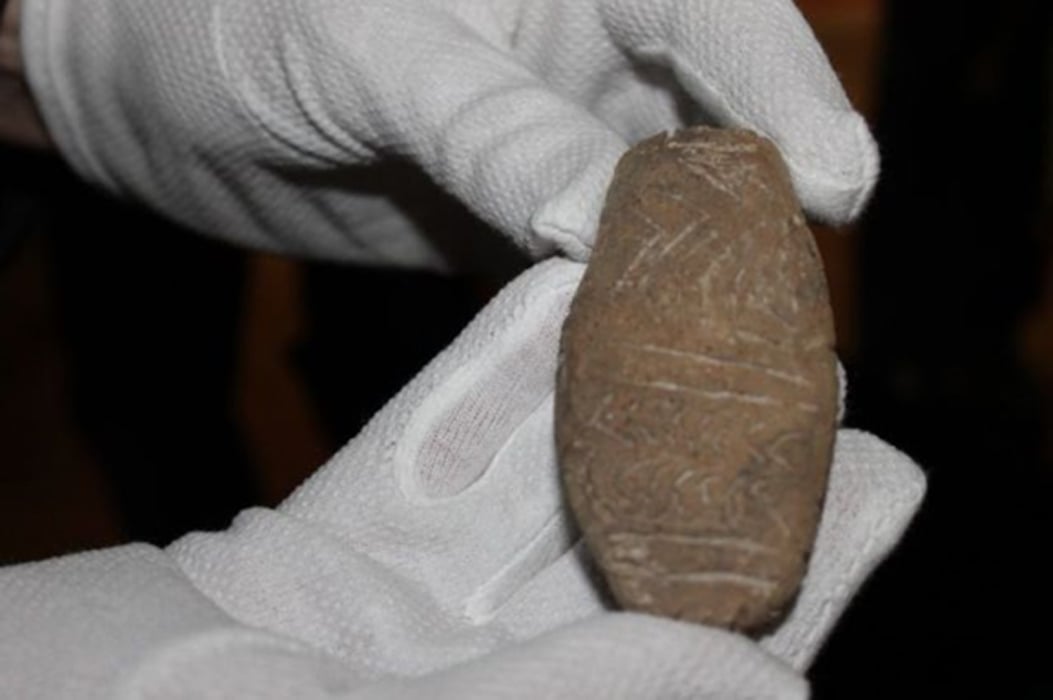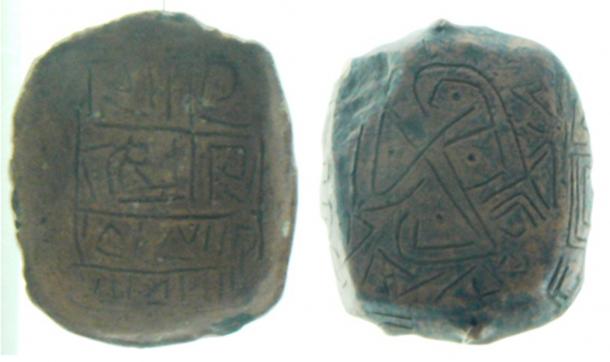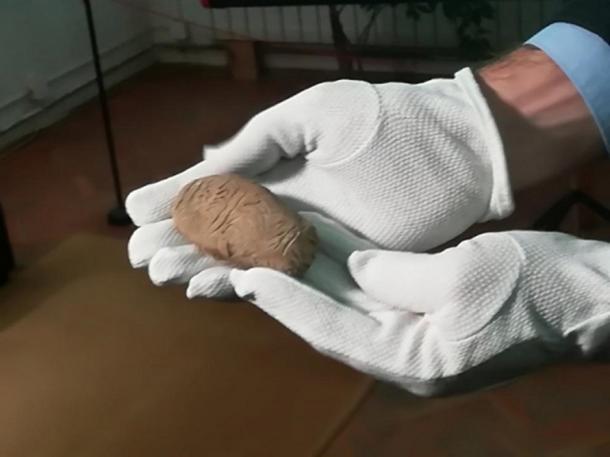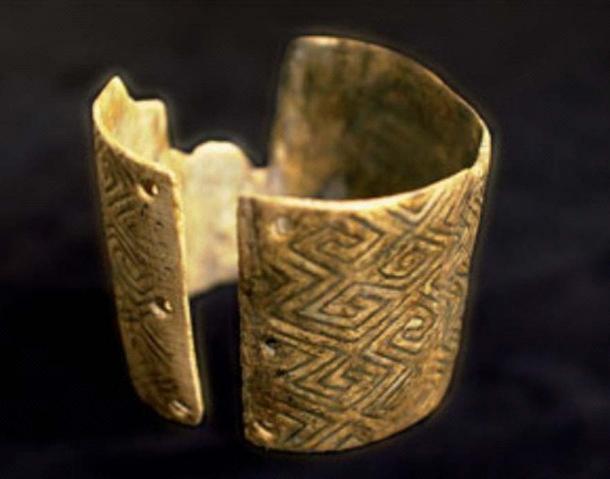
A tiny ceramic slab dated to around 6000 BC with “written signs” has been discovered by archaeologists at a prehistoric settlement near the town of Nova Zagora in Southeast Bulgaria. And, they believe this symbol stone might “possibly” hold the oldest writing ever discovered, according to a report in ArcheologyinBulgaria.com.
Bold Claims
It seems Bulgarian archaeologists have a thing for discovering “possibly the oldest writing ever discovered!” Only in 2016 a 7,000-year-old ceramic fragment was dug up in a Copper Age settlement at the town of Riben in Northern Bulgaria, and it too was presented as having “pre-alphabetic writing.” Back then, ArcheologyinBulgaria.com reported that Volodya Popov, the Director of the Pleven Regional Museum of History , argued that the fragment could contain “the world’s oldest writing.”

A copy of the two faces of the Gradeshnitsa tablet, (circa 5000 BC) exhibited in the Vratsa History Museum. ( CC BY-SA 3.0 )
Fast forward 24 months and now we have this latest ancient ceramic slab, which is nearly 8,000-years-old. It was one of a collection of 36 Neolithic artifacts “discovered on a river bank” at the site of a Neolithic settlement near Bulgaria’s Nova Zagora last fall. The discovery was announced only on February 14, 2018, “Archaeologists’ Day” in Bulgaria where the archaeologists told reporters at ArcheologyinBulgaria.com that they “hypothesize that the inscription from possibly the world’s oldest writing contains ritual calendar information having to do with the agricultural cycles of life,” and continued, “That is why the artifacts with inscriptions were no mere decorations but were of great worth for the Neolithic people who preserved them in their homes.”

At 8,000-years-old, possibly the oldest writing ever discovered. Image: Sliven District Administration
The written signs were inscribed on both faces of the wet ceramic slab with a sharp object and it has been noted that the inscription from Nova Zagora seems to be a form of writing that is “a more superior form of communication” than pictographs according to the archaeologists. Attempts to decode the inscription are yet to be made.
What Might Be Considered as the World’s Oldest Writing?
The biggest question facing archaeologists is when does an ancient symbol, or a doodle, become writing? The ArcheologyinBulgaria.com article claims “variably” that the marks are “written signs”, “possibly the (i.e. pre-alphabetic writing ).
But the paradox they face in “authenticating” their find as “the world’s oldest writing” is that if their “zig-zags” are “an advanced form of communication” and “possibly the ” then it can be argued that so is the zigzag engraving on the famous clam shell discovered in Indonesia dated to half-a-million-year-old, as reported by nature.com. So too might the zigzag on the 18000-year-old mammoth bone bracelet which is hypothesized to be a lunar calendar .

Bracelet from Mizyn. Image: Encyclopedia of Ukraine
Supporting their claim, that they may have discovered “the world’s oldest writing,” the Bulgarian specialists theorize that the zig-zag symbols might represent the “agricultural cycles of life” and a “ritual calendar.” However, because the stone doesn’t show classic groupings of 12 or 13 marks, which might represent solar and lunar months, other explanations must be considered and it might be no coincidence that the stone was found alongside “36 fishing tools” including “decorations, loom weights, fishing net weights, and ceramic figurines.”
Of course, archaeologists hold a flame of hope that they have indeed found “the world’s oldest writing” but at the back of their minds they must be considering it as part of a Neolithic fishing kit. It was found “on a river bank” and could have served as a decorated fishing weight, or a spool to wrap animal hair line around, or a charm to place under a river rock, and the list of fishing applications goes on. Only time will tell if this is “the world’s oldest writing” or fishing tackle, but I, like the Bulgarian archaeologists have everything crossed for the former.
The 8,000-year-old ceramic slab with “possibly the world’s oldest writing” has been made part of the collection of the Sliven Regional Museum of History and is to be exhibited in its permanent exhibition.